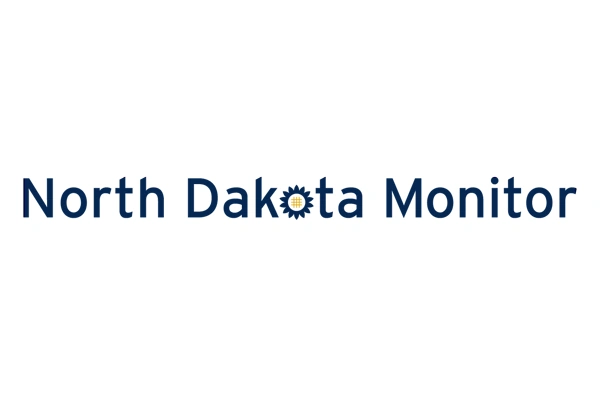A Senate committee heard a resolution Thursday that attempts to change lawmaker term limits approved by North Dakota voters in 2022.
Senate Concurrent Resolution 4028, sponsored by Sen. Justin Gerhardt, R-Mandan, would allow lawmakers to serve three terms, or 12 years, in either the House or the Senate chamber. The resolution would also limit statewide elected office-holders to three terms in office, but the governor and lieutenant governor would be limited to two terms.
“Three terms allows leaders to serve long enough to gain institutional knowledge and contribute effectively without making public office a lifetime position,” Gerhardt said. “It (the resolution) ensures we don’t force out good leaders too soon, while still keeping fresh voices in the mix.”
Under the proposal, a lawmaker could potentially serve up to 24 years if elected in each chamber.
In 2022, 63% of voters approved a citizen-initiated constitutional ballot measure that limits lawmakers to serving up to eight years in each chamber, or a total of 16 years. It also limits the governor to serving two terms.
Gerhardt told the Senate State and Local Government Committee he doesn’t believe his resolution overrules the will of North Dakota voters.
“When North Dakotans voted for term limits, they voted for limits on the governor and Legislature,” he said. “They weren’t asked about other statewide offices. This resolution doesn’t undo what voters approved. It expands it to term limits consistent across all offices and gives the voters a better option for legislative term limits.”
Sen. Judy Lee, R-West Fargo, said the executive branch will become more powerful with uniform term limits for all statewide and legislative office holders because the employees for those agencies will remain with consistent institutional knowledge. She also called the 2022 term limits ballot initiative a ”mess.”
“I think the ballot box is the final choice,” Lee said. “If they don’t like the people that are representing them, they won’t vote for them.”
Ultimately, Gerhardt said voters will decide the fate of his resolution on an Election Day vote, if it makes it through both legislative chambers.
During the hearing, Kevin Hermann of Beulah said he opposes Gerhardt’s bill because it circumvents the will of the voters.
“Senate Concurrent Resolution 4028 tells the citizens of North Dakota that legislators will not honor the wishes of the outcome of the 2022 general election,” Hermann said. “This resolution is a way for legislators to get back their legislative power over the citizens of North Dakota in proposing a new article to the North Dakota constitution.”
Gerhardt’s bill would also clarify that appointments to finish the term of a lawmaker would not count against the three-term limit. He said he takes this section personally because he was appointed to fill the last year of the term for the late-Rep. Doug Larsen, R-Mandan, who was killed in an airplane crash in October 2023.
Gerhardt told lawmakers that under the current law, he would only be allowed to serve in the Legislature for a total of five years and participate in two legislative sessions.
The committee took no immediate action Thursday.
The resolution is similar to House Concurrent Resolution 3034 sponsored by Rep. Jim Kasper, R-Fargo. Kasper’s measure would allow lawmakers to serve for 12 consecutive years in office before being required to leave office for at least four years. Then, they could potentially run again for another three consecutive terms.
Kasper’s resolution also would limit other statewide elected officials to 12 years, except the governor and lieutenant governor, who would be limited to eight years.
The resolution is scheduled to have a public hearing at 10 a.m. Friday before the House Government and Veterans Affairs Committee.
Another term limit measure, Senate Concurrent Resolution 4008, received a do-pass recommendation from the Senate State and Local Government Committee last month, though lawmakers acknowledged during a hearing that it could be challenged in court.
As amended by the committee, that resolution would allow lawmakers to serve four complete terms, or a total of 16 years, in the Legislature without requiring them to switch chambers. It also proposes that a partial term would not count against a lawmaker’s limit. It does not address term limits for the governor or other officials.
Another possible term limit tweak was passed by the House in January.That measure, House Bill 1300, proposes that the clock on term limits doesn’t start until after the November 2022 general election. It aims to clear up some confusion about how term limits affect lawmakers elected in 2020 and reelected in 2024. That bill now advances to the Senate.
SCR 4028
A concurrent resolution to create and enact a new article to the Constitution of North Dakota, relating to term limits for the governor, lieutenant governor, statewide elected officials, and members of the legislative assembly and prior years of service for members of the legislative assembly and statewide elected officers; to repeal sections 2, 3, 4, 5, and 6 of article XV of the Constitution of North Dakota, relating to cumulative term limits for members of the legislative assembly and the office of governor, and legislative authority, initiative petition processes, and severability; and to provide an effective date.
House Sponsors:
Senate Sponsors:




